After reporting that Myrtle Warblers (A.K.A. Yellow-rumped Warblers and Butter Butts) had had been seen on October 6, many more have arrived. A truck load of them must have come in on the night of November 1-2, as there were plenty around the following day.
Although the first bird that I saw on the morning of November 2nd as I pulled the Club Car into its parking spot down in Explore the Wild was a Dark-eyed Junco (first one of the season), the crisp clear air was filled with the flat, dry chek of Butter Butts. A look up into the nearby willows and wax myrtle confirmed, the birds had arrived in earnest. Warblers were swarming through the willows and attacking the myrtle. They had probably been flying all night and were hungry!
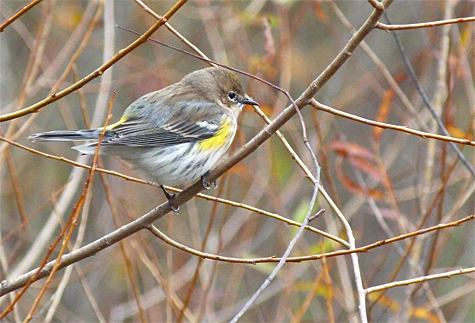
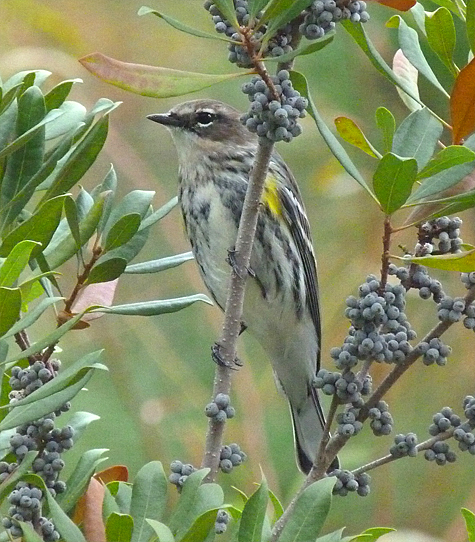
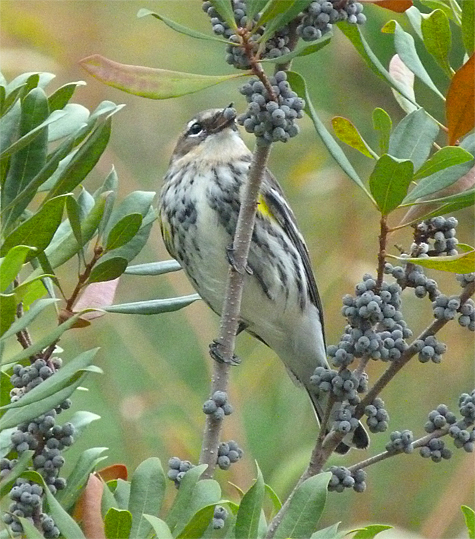
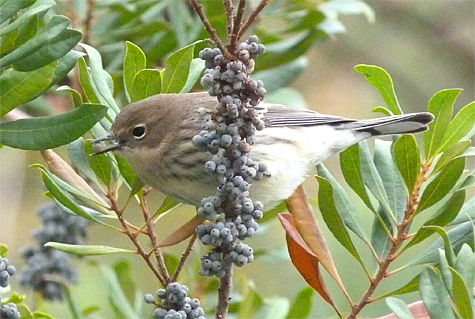
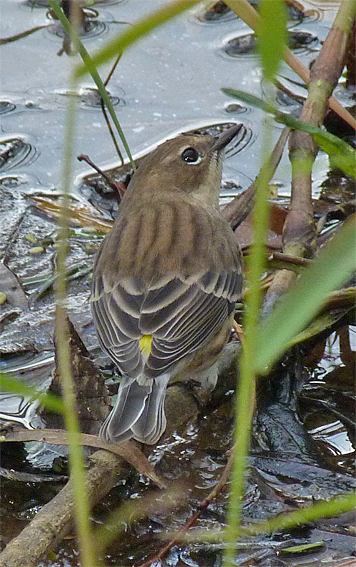
Besides the Myrtle Warbler’s mass arrival, other birds have moved in as well. I saw a Hermit Thrush feeding on juniper berries, several Northern Flickers, and a couple of Yellow-bellied Sapsuckers.
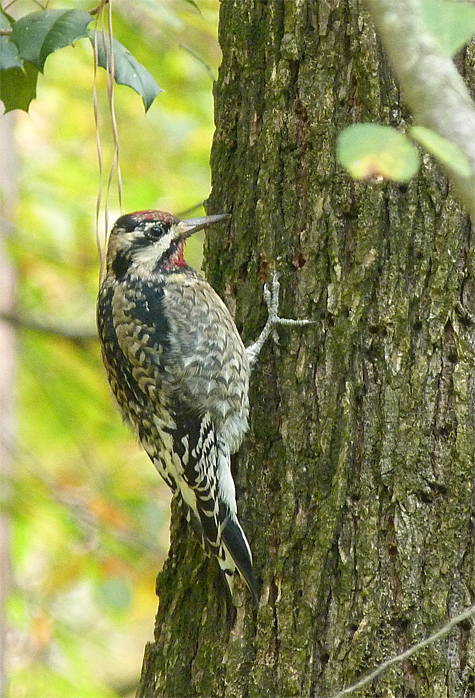
Can’t wait to see what shows up next!
Beautiful pictures, as usual. Birds seem so fragile – how do they hold up in freezing weather?
Thanks, Wendy.
The birds hold up quite well in cold weather. Feathers are great insulators. When it really gets cold, the birds fluff up their feathers in order to create an air barrier between their bodies and feathers. This further insulates them. And, as long as the birds get enough to eat to fuel their engines they’ll be fine.
It seems as though birds do nothing but eat, especially in winter. That’s pretty much true and very important for their survival. They spend most of their waking hours in winter eating or looking for food. Fuel!
It is amazing though, to think of some of the smaller species, like the Myrtle Warblers on the left, and even some hummingbirds, which can withstand below freezing temperatures, well below freezing, and survive the winter. Each year there are hummingbirds in our area that can, and do, make it through the winter, as long as they get plenty of food.